Group C – Birdlife
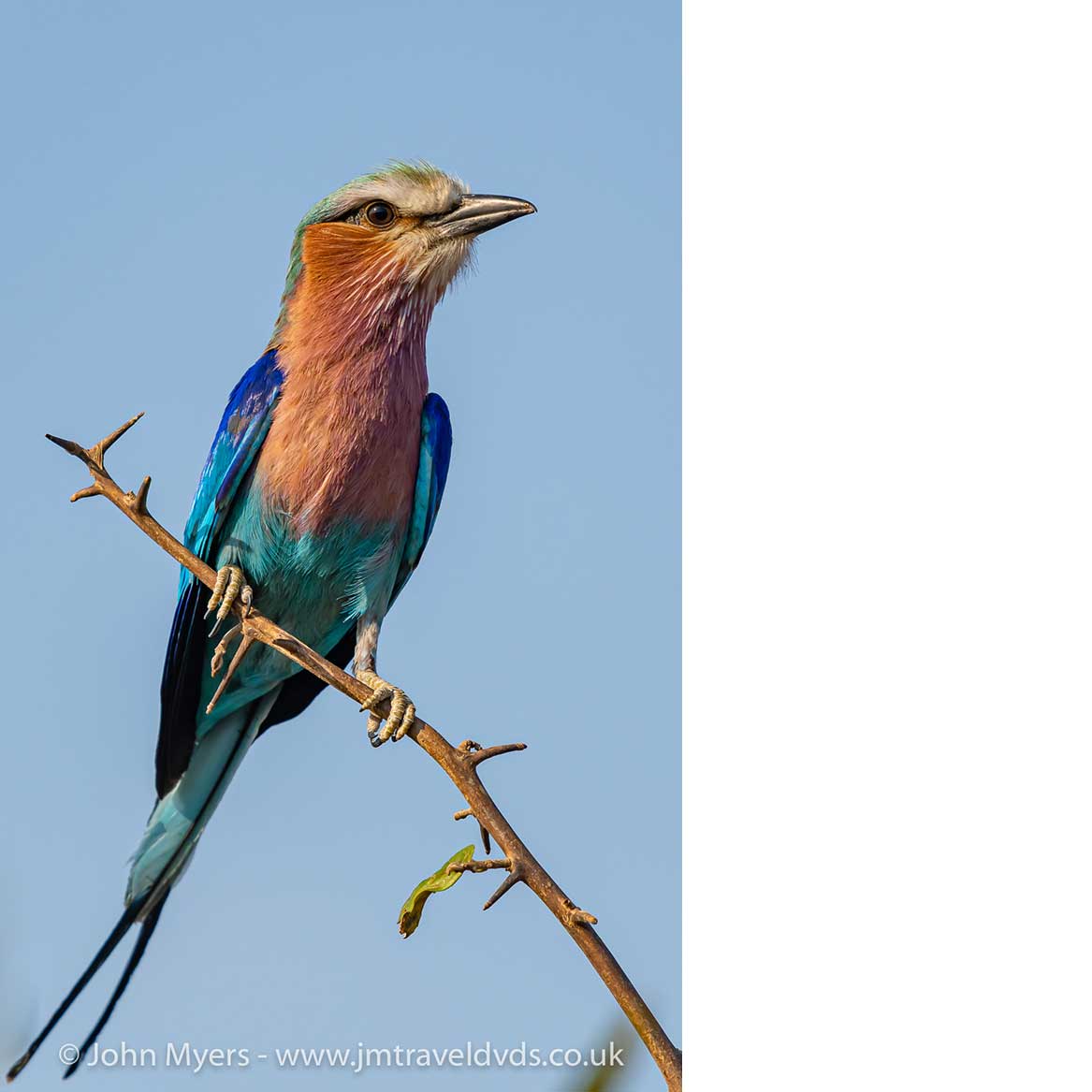
055. ‘YOU BEAUTY’. Lilac Breasted Roller. Tena Tena, South Luangwa National Park, Zambia
Widely distributed in Sub-Sahara Africa, the lilac breasted roller bird prefers woodland and savannah. Usually found alone or in pairs, it perches on top of vantage points from where it can spot insects moving around on the ground. This one was photographed in the Tena Tena lodge area of South Luangwa National Park.

056. ‘WHITE FRONTED’. White Fronted Bee-eater. Nsefu Sector, South Luangwa National Park, Zambia
The bird has a distinctive white forehead, a square tail and a bright red patch on its throat. The white fronted bee-eater is a common resident in the grasslands and savannah, often visible near rivers and wetlands. Unlike the other bee-eaters it lacks the elongated central tail streamers.
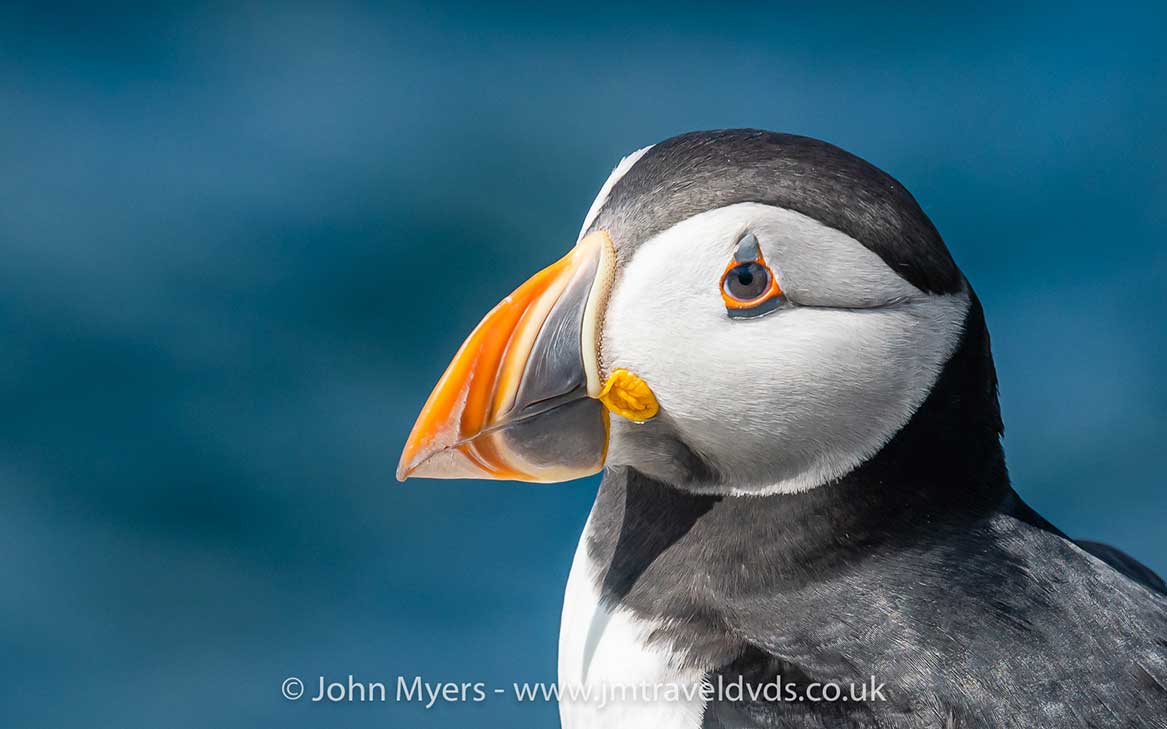
057. ‘THERE’S A PORTRAIT’. Puffin. Farne Islands, Northumberland, UK
Puffins visit the Farne Islands to breed. Their season is from mid April until late July. For the remainder of the year, they fly out to sea, overwintering on the water, the north Atlantic Ocean, before returning each year to breed on the islands.

058. ‘TOUCH DOWN’. Puffin. Farne Islands, Northumberland, UK
In the British summer time, the Farne Islands, just off the Northumberland coastline, are home to over one hundred thousand pairs of breeding seabirds. Probably making up over half this number are the delightfully colourful puffins.

059. ‘MOUTHFUL’. Puffin. Farne Islands, Northumberland, UK
A puffin has just returned from North Sea fishing and is on its way to its burrow on the Inner Farne Island with the sand eel catch.

060. ‘WHERE’S THE CATCH?’ Great White Pelicans & Yellow Billed Storks. Zikomo Camp Area, South Luangwa National Park, Zambia
A mixture of great white pelicans and a muster of yellow billed storks seem oblivious to the presence of a crocodile floating alongside. Storks realise the ever present danger, but a crocodile moving along the shoreline will scare a few fish, which the storks can catch.
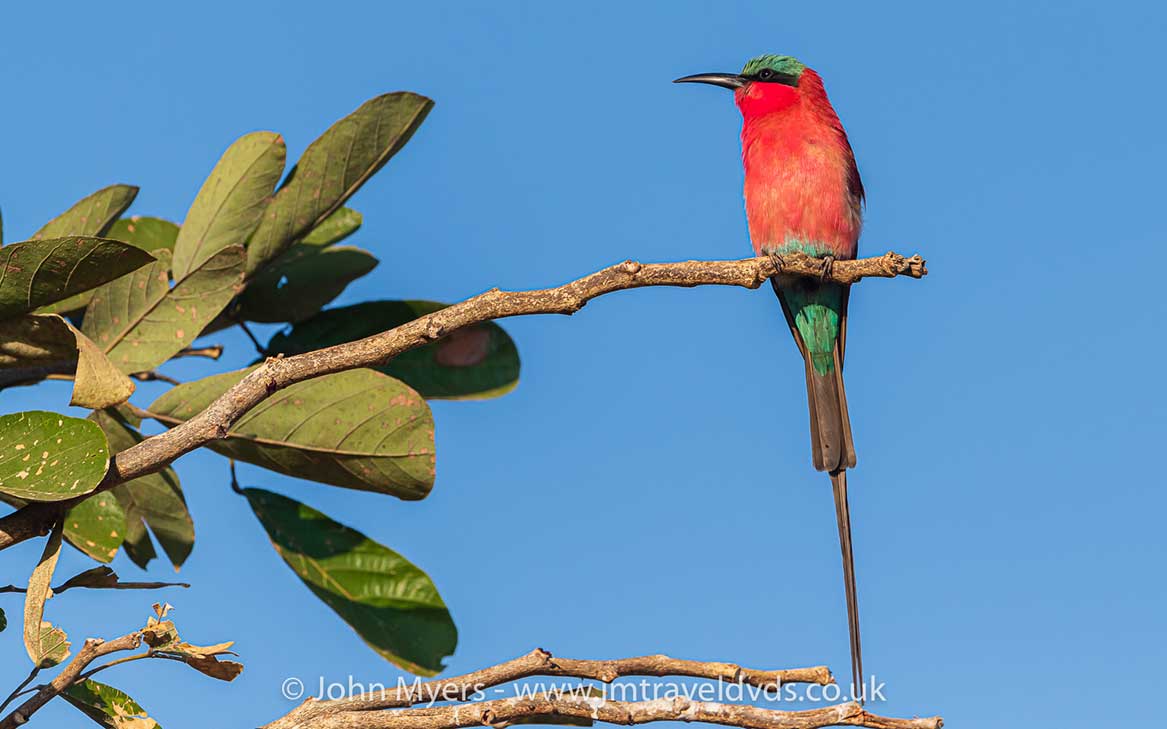
061. ‘JUST ARRIVED’. Carmine Bee-eater. Zikomo Lodge Area, South Luangwa National Park, Zambia
The carmine bee-eater belongs to a migratory species, spending the breeding season from August to November in Zambia and Zimbabwe, before moving back to South Africa for the summer months. It then migrates to equatorial Africa from March to August. This bird has just arrived in Zambia. It will be one of thousands that will use the vertical banks of the Luangwa River to tunnel holes to breed.

062. ‘ENGAGE LANDING GEAR’. Grey Crowned Cranes. Zikomo Lodge Area, South Luangwa National Park, Zambia
A flock of grey crowned cranes are about to touch down on some wetland. Here they will spend time looking for food. They are omnivores, eating insects, plants, seeds, frogs and small fish. They will stamp their feet while walking, hoping to flush out some edible creature. At night they will fly up into the trees to rest and sleep.

063. ‘YOUTHFUL FEATHERS’. Juvenile Black Hawk. Cristolino River Area, Brazil
The immature great black hawk is dark brown above with spotting and streaks. The under parts are buff with dark spots and the tail has a number of black and dusky bars.
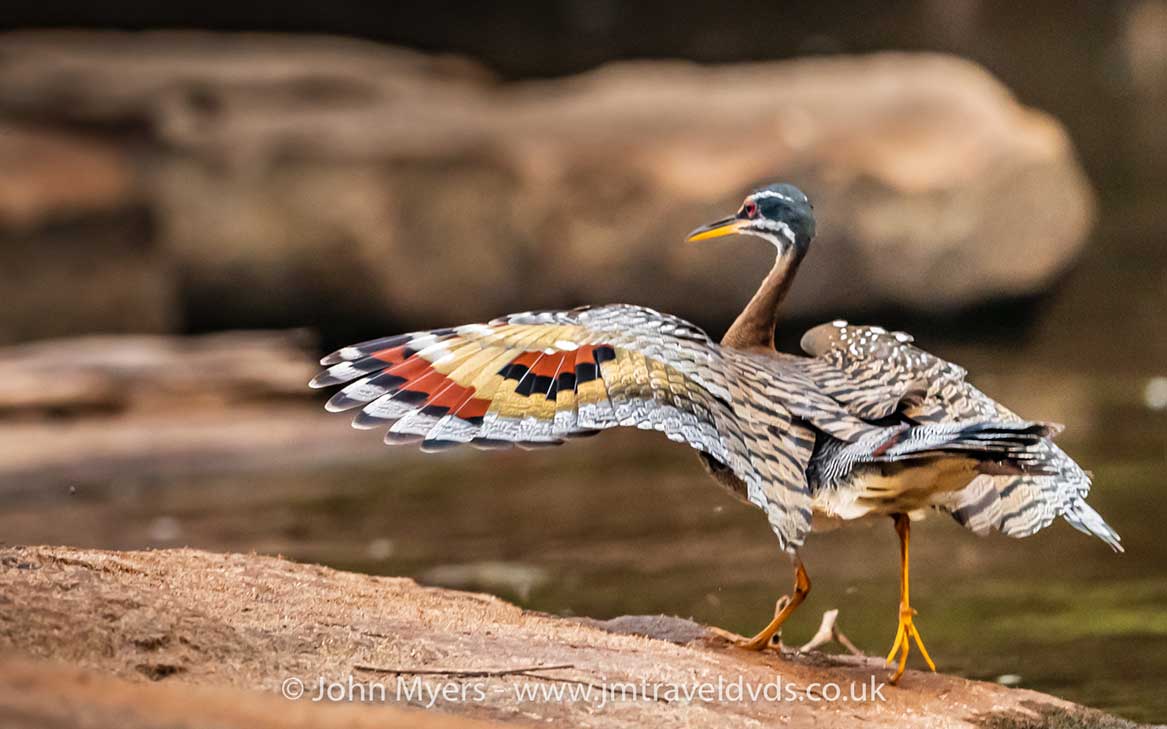
064. ‘READY FOR TAKE OFF’. Sunbittern. Cristolino River Area, Brazil
The sunbittern has generally a subdued colouration. But with wings fully spread the bird presents bright colours of red, yellow and black. These colours are shown to other sunbitterns in courtship and can act as a threat display or used to startle potential predators.
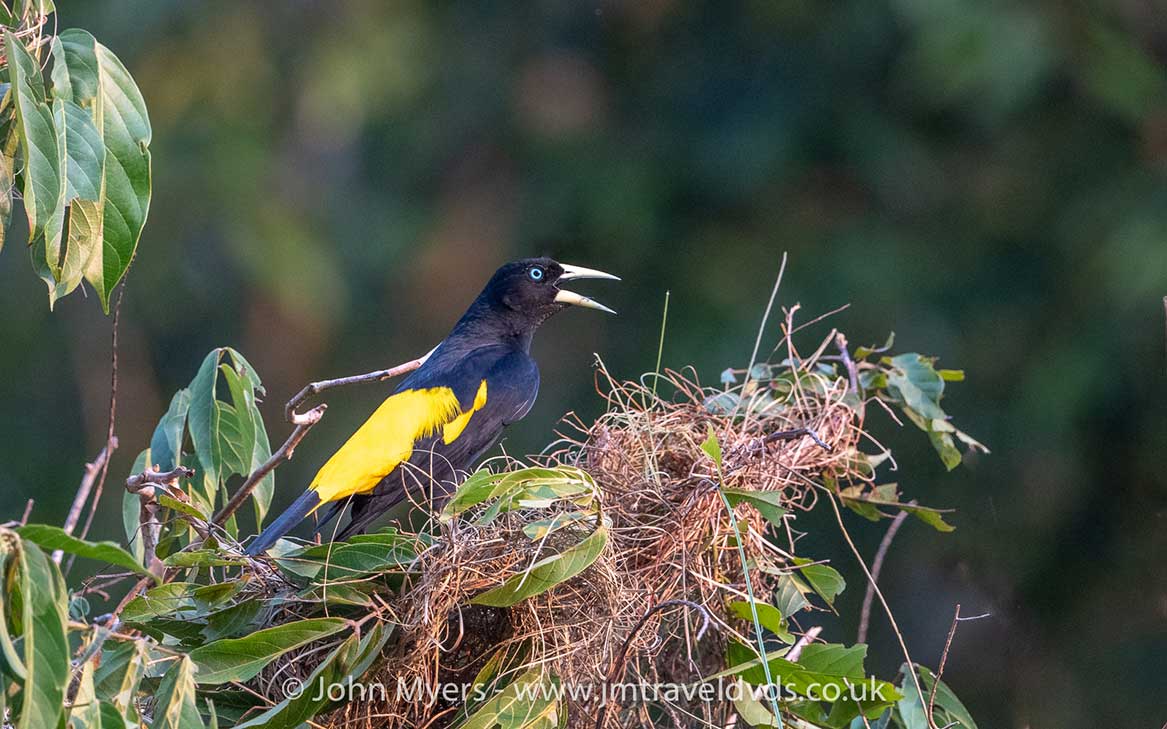
065. ‘NESTING TIME’. Yellow Rumped Cacique. Cristolino River Area, Brazil
The yellow rumped cacique is a slim bird with a long tail, blue eyes and a pale yellow pointed bill. It is a colonial breeder with up to a hundred bag shaped nests in a tree. The females build the nest, incubate and care for the young.
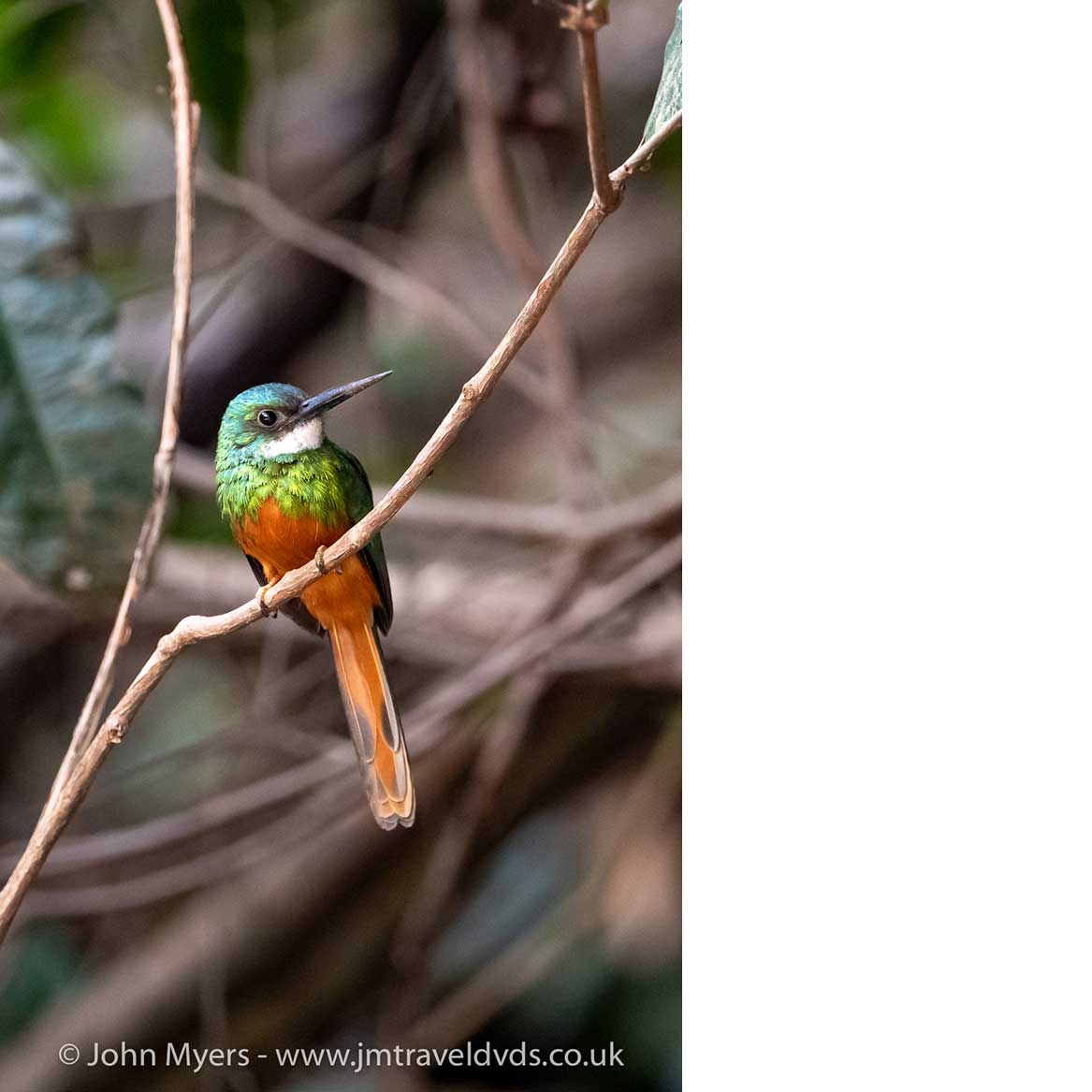
066. ‘ONLY ONE’. Rufus Tailed Jacamar. Cristolino River Area, Brazil
Rufus Tailed Jacamars are distinctive slender birds with long straight bills and graduated tails, They nest in burrows dug into the river bank. The only Jacamar to be found in the Pantanal in Brazil is the Rufus Tailed Jacamar. This one was sighted near the Cristalino river.
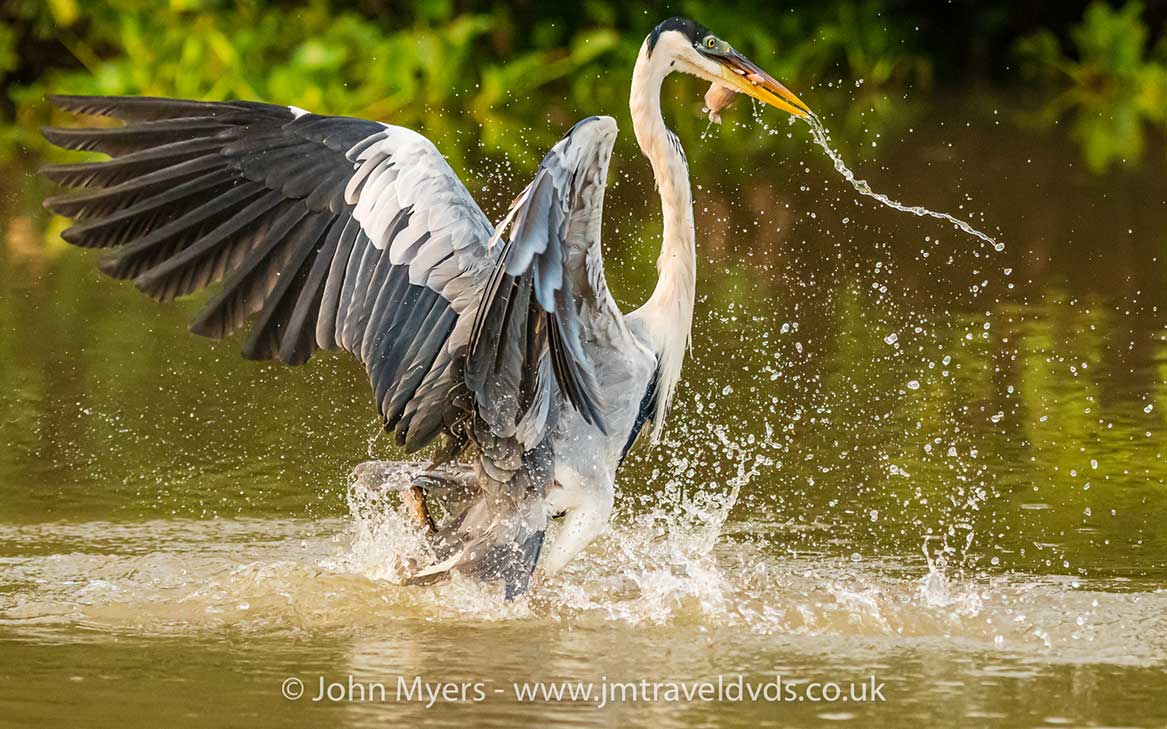
067. ‘GOTCHA’. Cocoi Heron. Pantanal, Matto Grosso, Brazil
The cocoi heron is a species of long legged wading bird, found across South America. It has predominantly pale grey plumage with a darker grey crest. A carnivore, it hunts fish and crustaceans in shallow water.
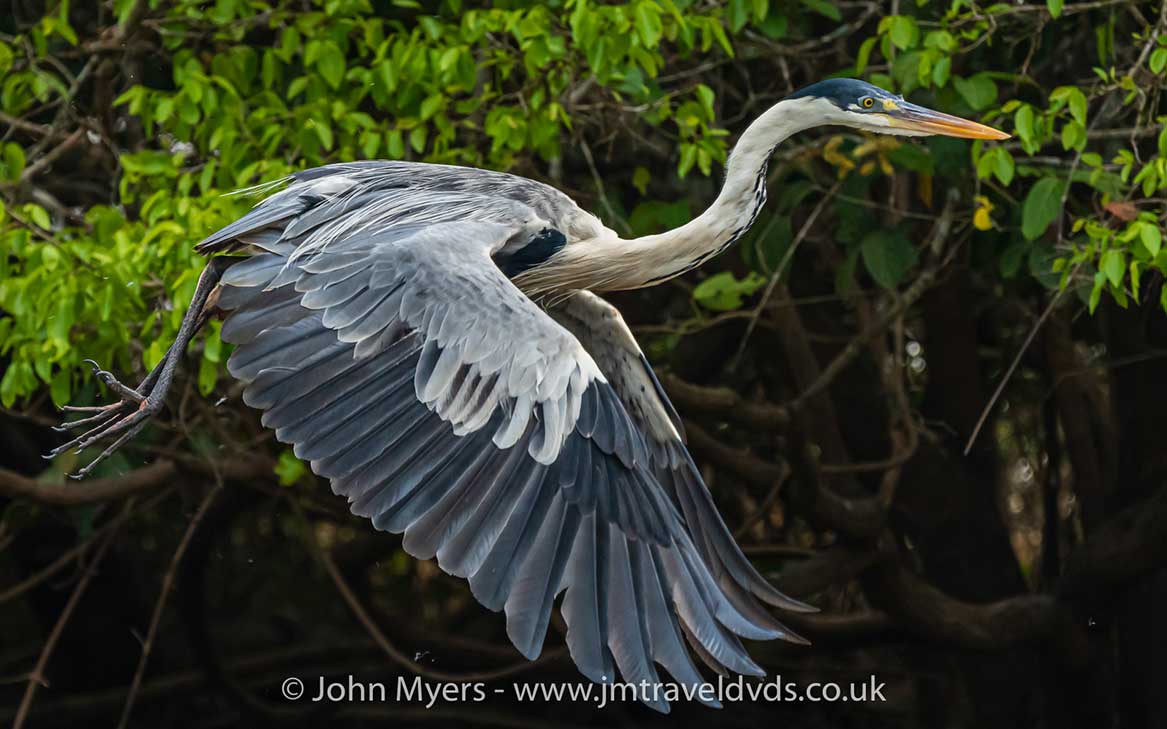
068. ‘IN FLIGHT MODE’. Cocoi Heron. Pantanal, Matto Grosso, Brazil
The cocoi heron is the largest of the South American heron species. The sexes are alike in both body size and coloration. In flight, its large wings make it a slow but sturdy and graceful flyer.
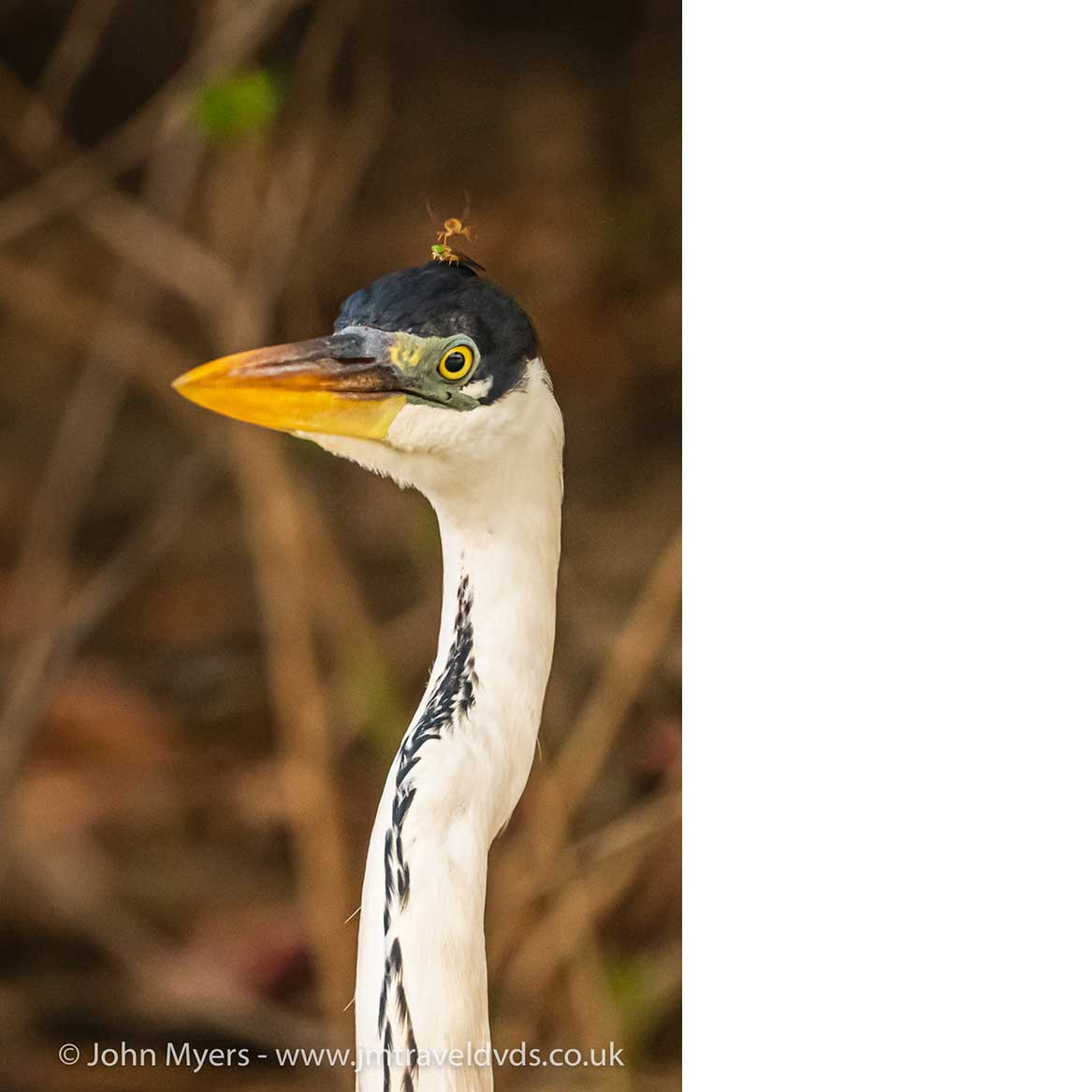
069. ‘AYE AYE’. Cocoi Heron. Pantanal, Matto Grosso, Brazil
The cocoi heron is similar in appearance to the grey heron, but the former has a slightly darker colouration and a longer neck and crest. The activity taking place on the head of this cocoi is not a threat but may be irritating. Alongside human interference, the one natural threat may be posed by the southern crested caracara.
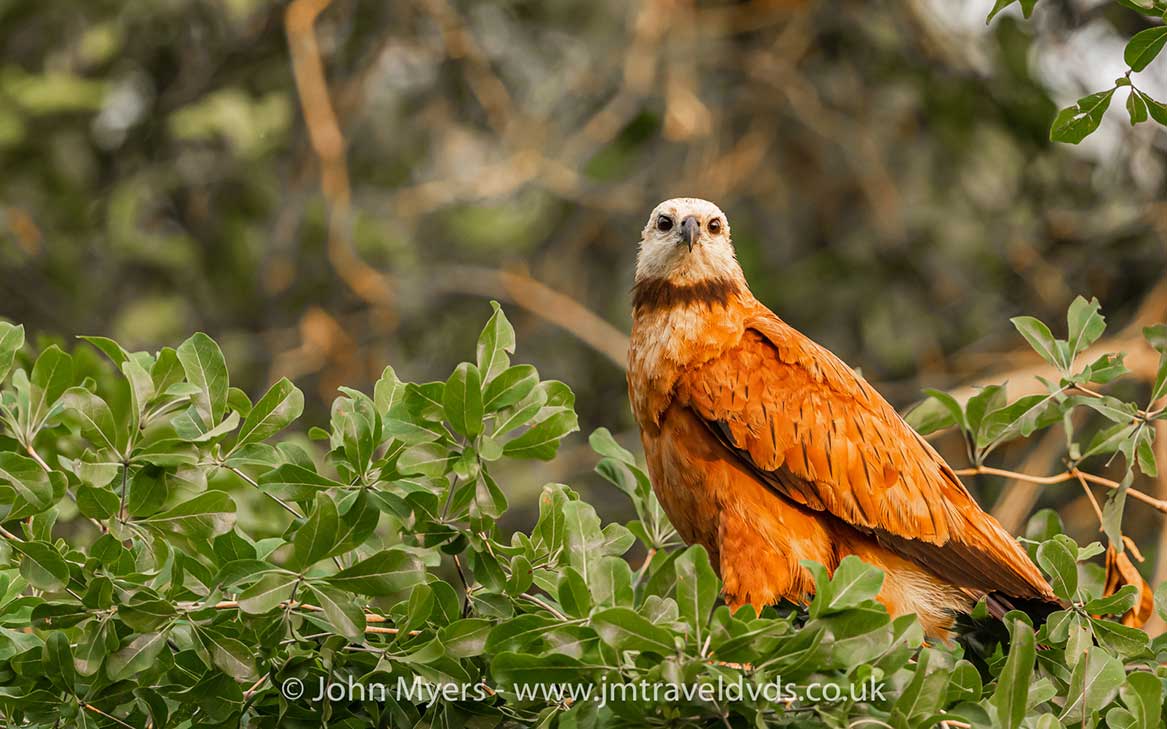
070. ‘POWERFUL FLYER’. Black Collared Hawk. Pantanal, Matto Grosso, Brazil
This bird of prey usually perches low, pouncing on a fish in shallow water. Though often sluggish, black collared hawks are powerful flyers, capable of soaring to great heights on their broad wings. This example was seen on the banks of the Cuiaba River.
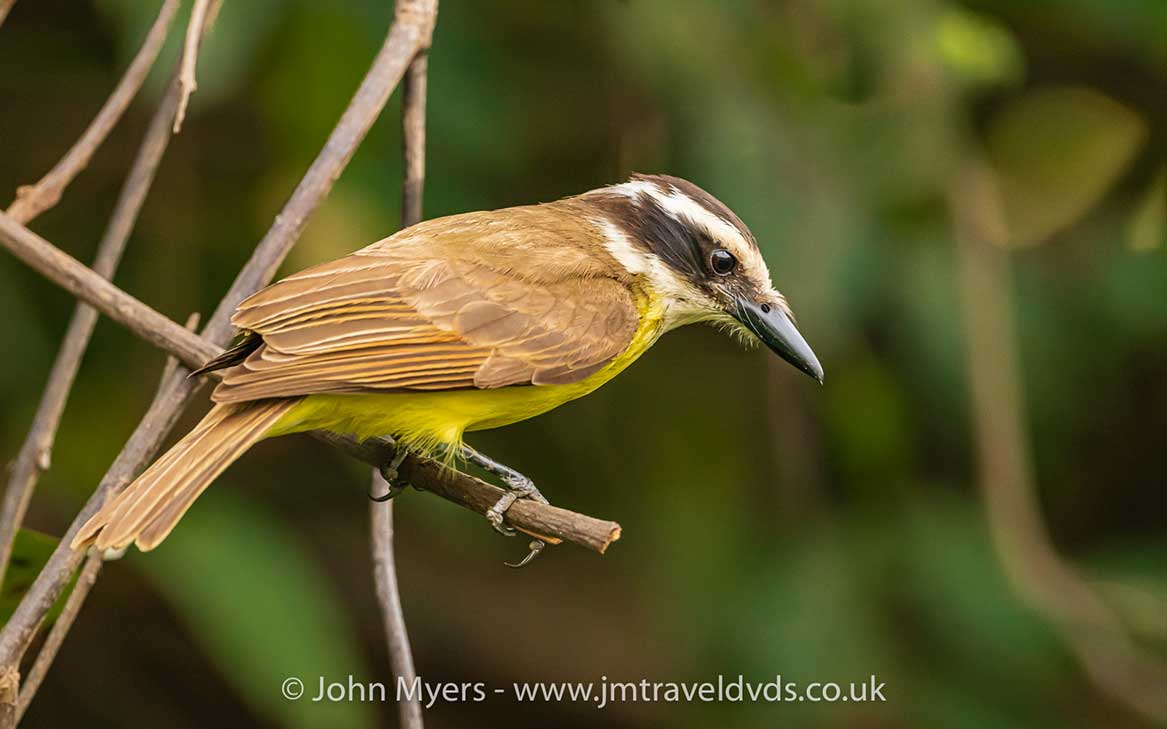
071. ‘PERCHED LOW’. Great Kiskadee. Pantanal, Matto Grosso, Brazil
The great kiskadee is a common, noisy and conspicuous bird. It hunts like a strike or flycatcher, waiting on an open branch to sally out to catch insects in flight or pounce on small rodents.
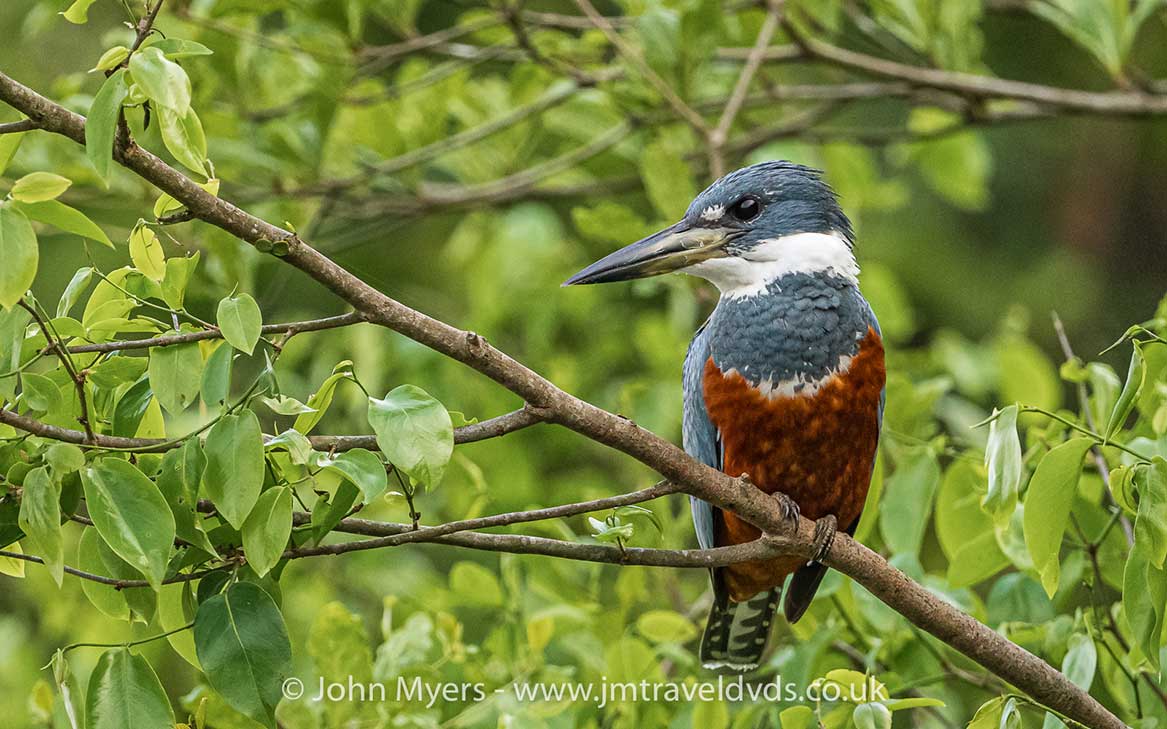
072. ‘LARGEST OF FIVE’. Female Ringed Kingfisher. Pantanal, Matto Grosso, Brazil
There are five kingfishers to be seen in the Pantanal. The Ringed Kingfisher is the largest with a distinctive bushy crest. It plunges for fish from a perch, often from considerable height. The other four kingfishers are the Amazon Kingfisher, the American Pygmy Kingfisher, the Green Kingfisher and the Green-Rufus Kingfisher.
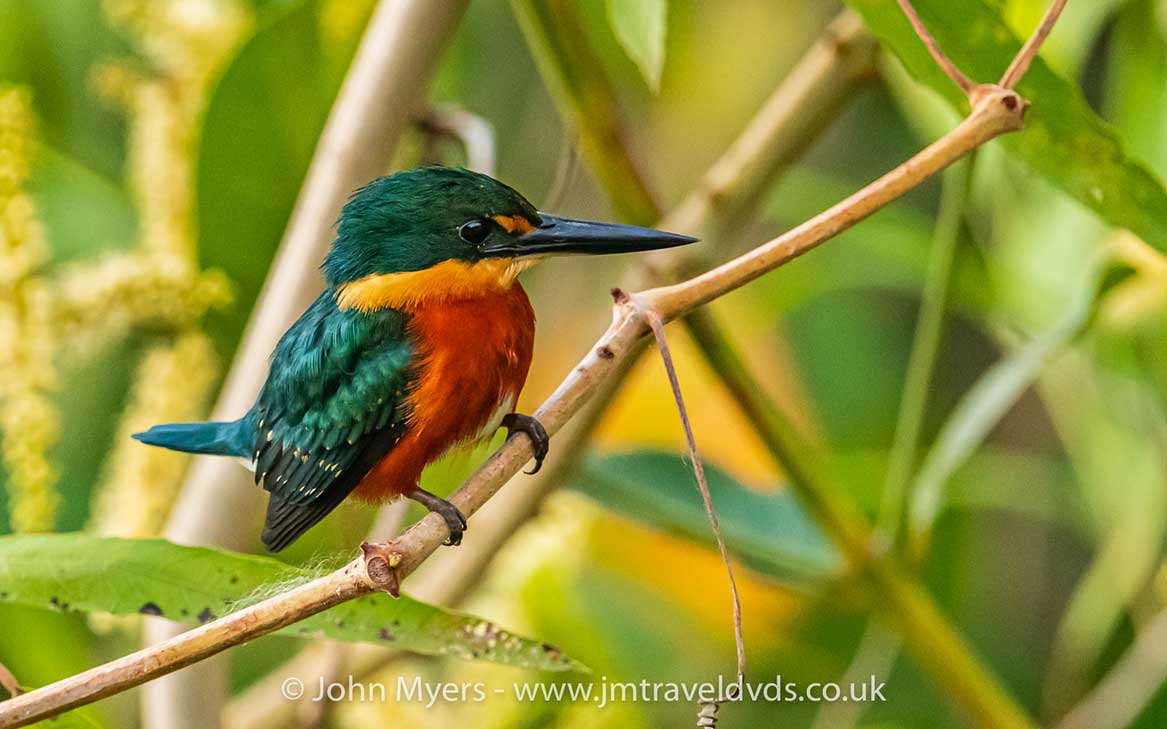
073. ‘SMALLEST OF FIVE’. Male American Pigmy Kingfisher. Pantanal, Matto Grosso, Brazil
The American Pygmy Kingfisher (this one is a male) is tiny, has the typical kingfisher shape, with a short tail and long beak. It can usually be seen along small streams or rivers with heavily vegetated banks. The pigmy kingfisher perches quietly on a low branch close to the water before plunging in head first after small fish or tadpoles.
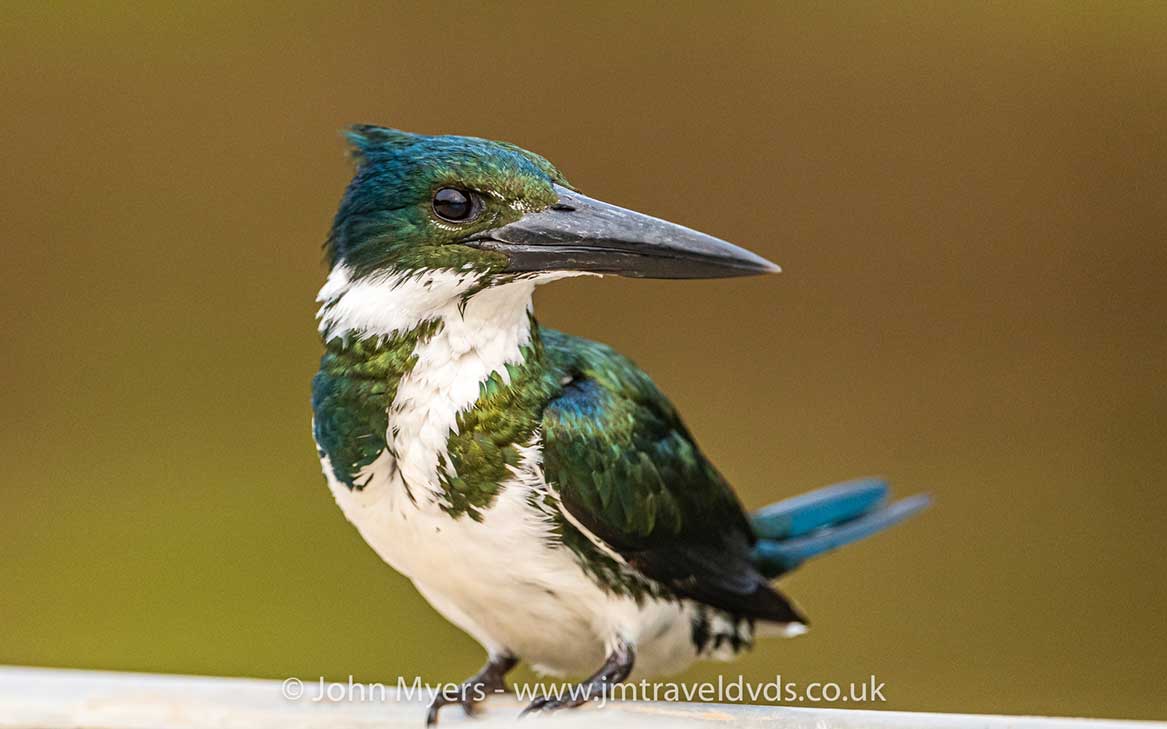
074. ‘OILY GREEN’. Female Amazon Kingfisher. Pantanal, Matto Grosso, Brazil
The largest green kingfisher (this one is a female Amazon kingfisher) has a heavy blackish bill. The Amazon kingfishers are seen singly or in pairs. They often perch out in the open on low branches. Their flight is fast and direct, often low over water. They are most common in the Pantanal area.
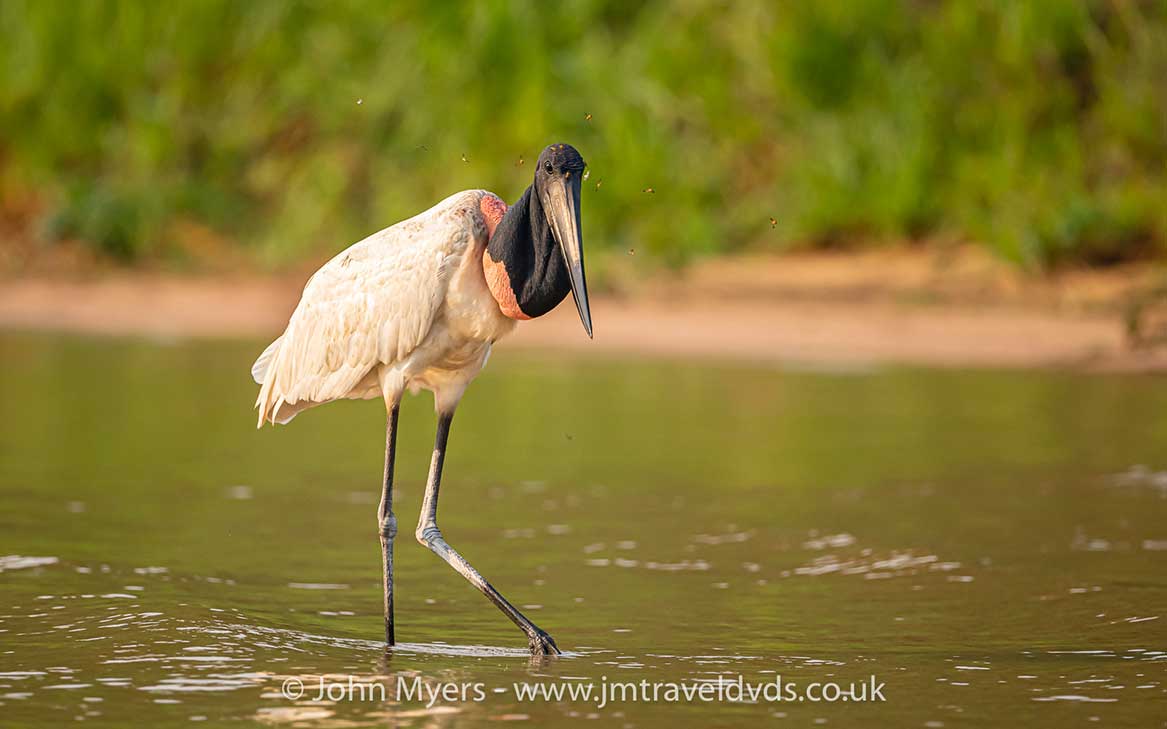
075. ‘BEE ANNOYING’. Jabiru. Rio Cuiaba, Pantanal, Matto Grosso, Brazil
These insects are a distinct annoyance to the jabiru. It cannot seem to escape their attention. The jabiru is the tallest flying bird found in South America. There, the jabiru has the second largest wingspan after the Andean condor. The jabiru’s beak is black and broad, slightly upturned, ending in a sharp point. They feed by holding their open bill at a forty five degree angle to the water. When prey is contacted, the stork closes the bill, brings it out of the water, throws its head back and swallows the prey whole.
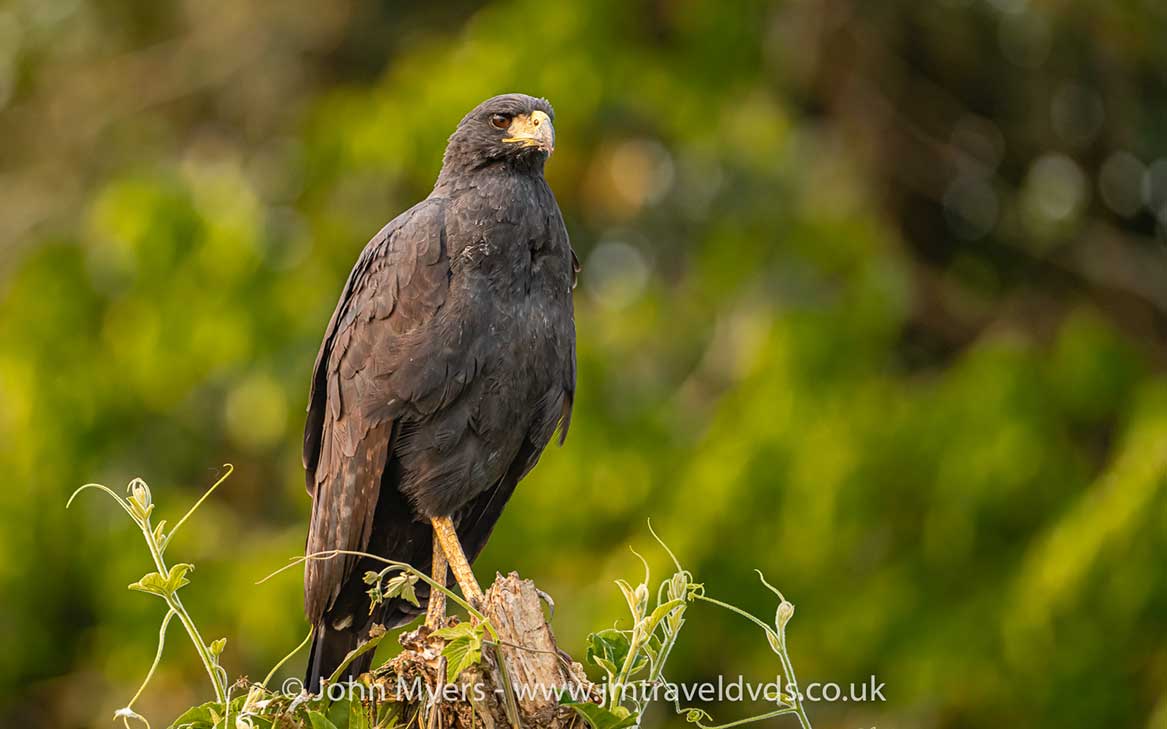
076. ‘PERCHED AND PROUD’. Great Black Hawk. Rio Paragui Area, Brazil
The great black hawk has very broad wings and is mainly black. The adult great black hawk feeds mainly on reptiles, other small vertebrates and large insects. Along Amazon rivers it has been observed raiding nesting colonies looking for eggs and chicks.
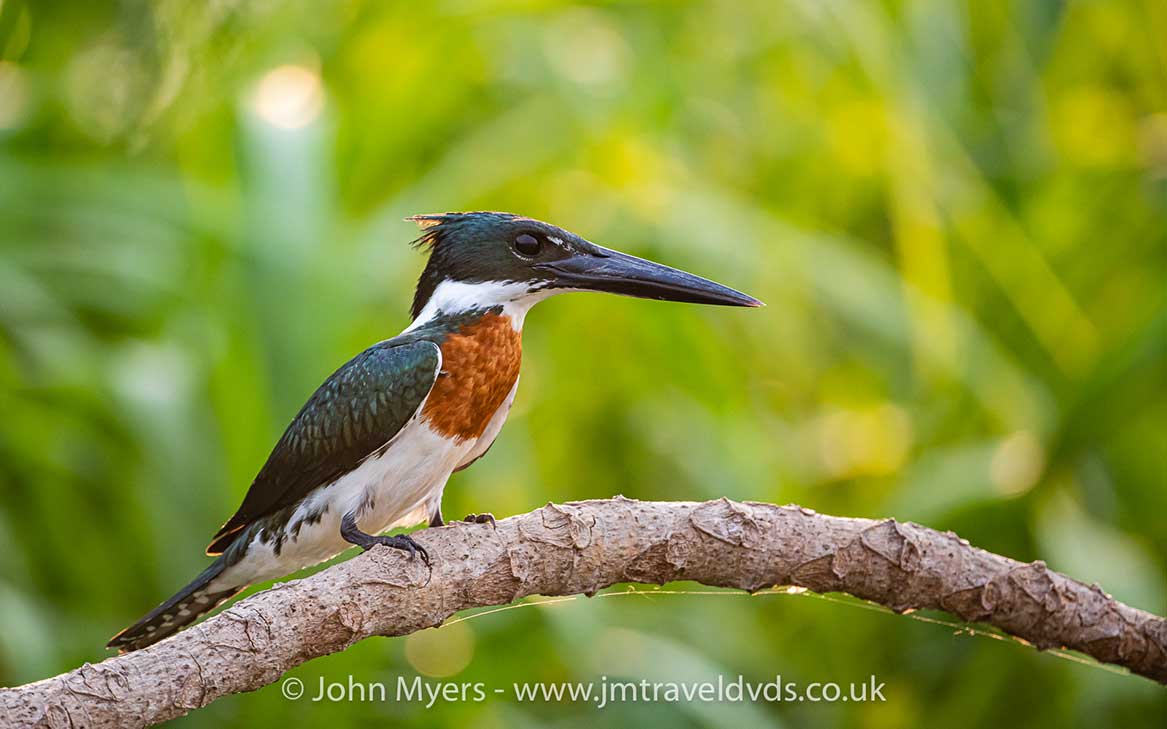
077. ‘RUFUS CHEST BAND’. Male Amazon Kingfisher. Rio Paragui Area, Brazil
The male is distinguished quite easily from the female Amazon kingfisher. The male bird has white under parts apart from a broad chestnut coloured breast and some green streaks on the flanks. They are found in broad areas in South America.

078. ‘YOUR SHOUT’. Tiger Heron. Rio Paragui Area, Brazil
Tiger herons are most numerous in the Pantanal in Brazil. They can be seen in marshes, around ponds and lakes and along forested river banks. This one was spotted on the banks of the Cuiaba River. They attain full adult plumage over several years.

079. ‘PRETTY BIRD’. Lilac Breasted Roller. Nsefu Sector, South Luangwa National Park, Zambia
The lilac breasted roller is usually spotted perched alone on a tree in a grassy clearing. They are found throughout Eastern and Southern Africa. They are most abundant in Kenya.
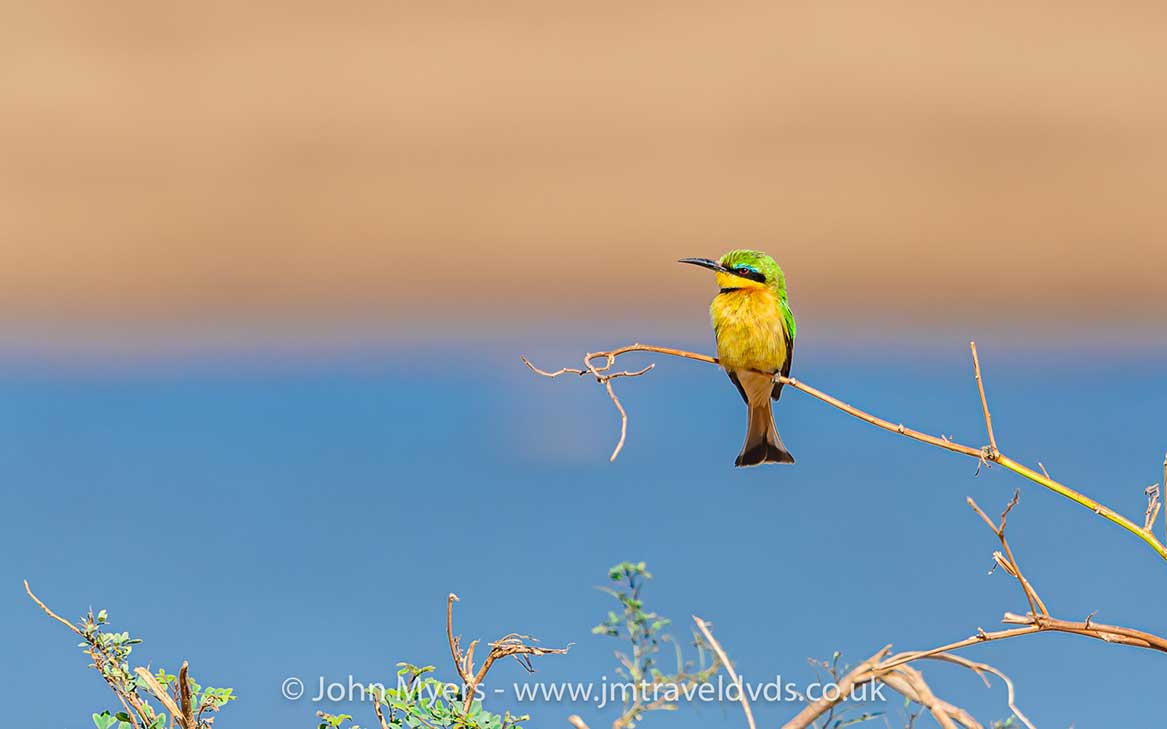
080. ‘TINY’. Little Bee-eater. Nsefu Sector, South Luangwa National Park, Zambia
The little bee-eater bird is a common resident in the savannah, woodland and on forest edges. To distinguish it from other bee-eaters, it has a yellow throat, black collar and a shallowly forked tail.




